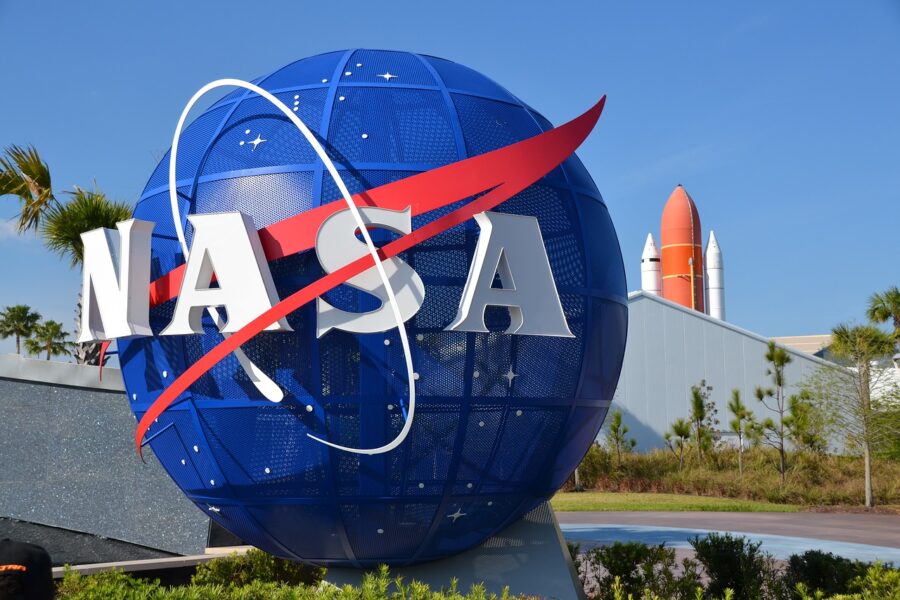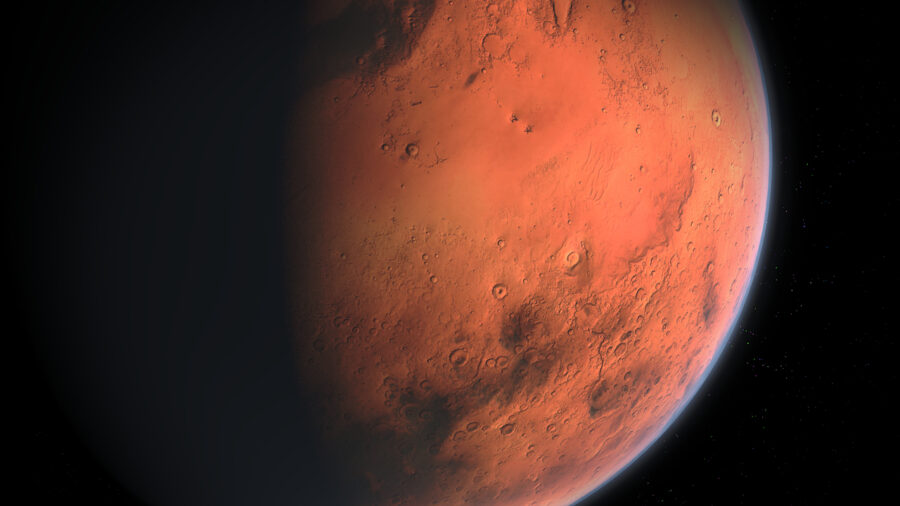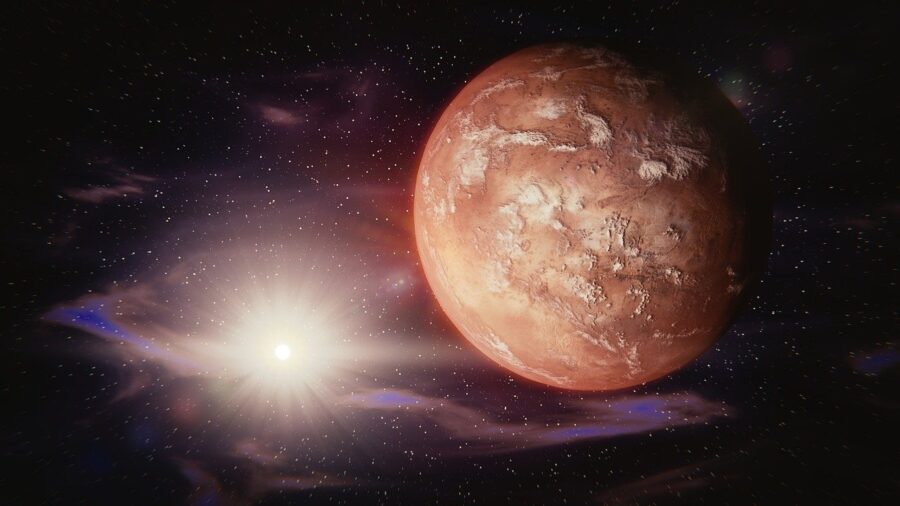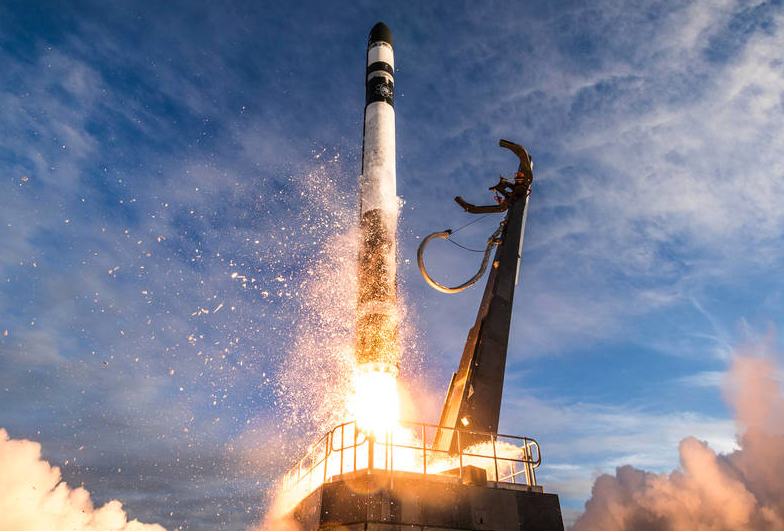NASA Is Manufacturing Oxygen On Mars Right Now
NASA scientists made a major breakthrough on Mars when they were able to produce oxygen for the first time on the Red Planet.
This article is more than 2 years old

In what represents one more giant leap for mankind, NASA has conducted another “first” on the Red Planet. This giant leap could be considered the most important of all as NASA has just turned some of Mars’ carbon dioxide-rich atmosphere into oxygen.
Mars’s rover Perseverance, NASA’s most advanced astrobiology lab, spent seven months traveling to the Red Planet, finally landing on February 18, 2021. Aboard the rover was a toaster-sized instrument called the Mars Oxygen In-Situ Resource Utilization Experiment, or MOXIE, an experimental device sent specifically to see if NASA could take that giant step and convert the Martian atmosphere into something we human can breathe.
While the initial output was minimal, MOXIE converted the Red Planet atmosphere into roughly five grams of oxygen that equates to about 10 minutes worth of breathing air for astronauts. It showed we most definitely have the capability for bigger and better things.

“This is a critical first step at converting carbon dioxide to oxygen on Mars,” said Jim Reuter, associate administrator at NASA’s Space Technology Mission Directorate. “MOXIE has more work to do, but the results from this technology demonstration are full of promise as we move toward our goal of one-day seeing humans on Mars. Oxygen isn’t just the stuff we breathe. Rocket propellant depends on oxygen, and future explorers will depend on producing propellant on Mars to make the trip home.”
As everyone knows, oxygen is the key to it all. Not only for astronauts to survive a lengthy stay on the Red Planet, but also to help their rocket ships take off from the planet’s surface. Michael Hecht of the Massachusetts Institute of Technology’s Haystack Observatory is MOXIE’s principal investigator, and he explains, “To burn its fuel, a rocket must have more oxygen by weight. To get four astronauts off the Martian surface on a future mission would require approximately 15,000 pounds (7 metric tons) of rocket fuel and 55,000 pounds (25 metric tons) of oxygen. In contrast, astronauts living and working on Mars would require far less oxygen to breathe. The astronauts who spend a year on the surface will maybe use one metric ton between them.”
What MOXIE has achieved is not an easy task given the carbon dioxide-rich nature of Mars. Trudy Kortes, director of technology demonstrations within NASA’s Space Technology Mission Directorate, said in her statement that “MOXIE isn’t just the first instrument to produce oxygen on another world,” but that it is the first technology of its kind that will help future Mars missions “live off the land” of another planet.
Kortes went on further with her explanation, “It’s taking regolith, the substance you find on the ground, and putting it through a processing plant, making it into a large structure, or taking carbon dioxide – the bulk of the atmosphere – and converting it into oxygen,” she said. “This process allows us to convert these abundant materials into useable things: propellant, breathable air, or, combined with hydrogen, water.”
To explain how all this works, while not trying to get lost in the technical weeds, MOXIE uses electrolysis, which is extreme heat to separate oxygen atoms from the molecules of carbon dioxide. 95% of Mars’s atmosphere is carbon dioxide.
That remaining 5% atmosphere doesn’t help much either. It consists primarily of molecular argon and nitrogen. Any trace of oxygen on Mars is negligible at best. So, you can see that MOXIE had quite a bit of heavy lifting to do to produce the nearly 10 minutes of breathable air.

Now, consider just how much oxygen it would take in simply providing the lift to get a rocket off the ground on Mars. By NASA’s estimation (and since they are all brainiac scientists, we can assume their numbers are spot-on) and per Hecht above, it would take about 15,000 pounds (7 metric tons) of rocket fuel as well as 55,000 pounds (25 metric tons) of oxygen just to get four astronauts in the air from Mars’ surface. Trying to haul that much oxygen through space would be daunting at best, which is why Perseverance and MOXIE are doing their thing on Mars.
The little toaster-sized MOXIE is designed to produce up to 10 grams per hour, which equates to about 20 minutes of breathing air, to prove that their concept works. Hecht says the plan over the next two years is to run MOXIE at least nine more times.
While Moxie’s initial run was mainly to make sure the instrument survived the seven-month journey and landing, Hecht describes future oxygen-producing as three phases. The first phase is designed to check out and characterize MOXIE’s function. The second phase will test MOXIE under different and varying atmospheric conditions to include different times of day and seasons. In the third phase, Hecht says, “we’ll push the envelope.” The goal here will be to try new operating modes for MOXIE while introducing “new wrinkles, such as a run where we compare operations at three or more different temperatures.”

As we mentioned, Perseverance is bringing home to Earth a number of firsts. MOXIE’s oxygen production comes one short (or long if we are talking Mars time) day after NASA had their Wright Brothers moment. Mission managers at the Jet Propulsion Laboratory were able to get the drone Ingenuity to lift off from the Mars surface and hoover for nearly 40 seconds.
It is simply fascinating what NASA and crew have been able to accomplish so far on Mars. Of course, all this is in preparation for their first planned manned mission to the Red Planet, which they are hoping to achieve in the 2030s.












